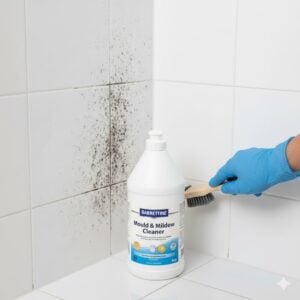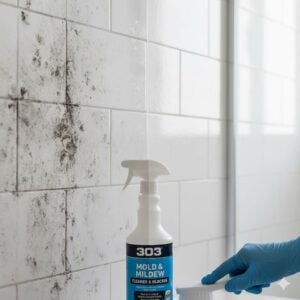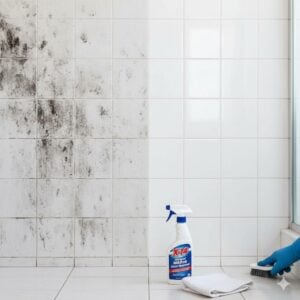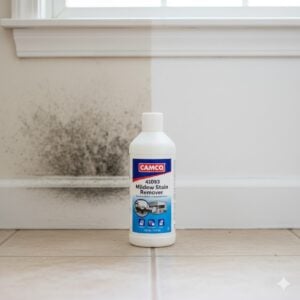Mould allergy symptoms are an issue many people in the UAE deal with without even realizing it. Because mould grows easily in damp places such as bathrooms, kitchens, basements, and air conditioning systems, exposure is common. In a humid climate where AC units run almost all year, mould spores can easily circulate indoors and trigger allergic reactions. For some, these reactions feel like a mild cold, while for others they can cause serious breathing problems. Understanding mould allergy symptoms, their causes, and how to manage them is important for keeping yourself and your family safe and comfortable. In this article, we’ll explore what mould allergy really is, what symptoms to watch for, how to tell the difference from other conditions, and what steps you can take to prevent mould exposure in your home.
Table of Contents
ToggleWhat Is a Mould Allergy?
A mould allergy happens when your immune system reacts to spores released by mould. Normally, mould spores are harmless for most people when present in very small amounts. But in higher concentrations, or for people who are sensitive, the body treats these spores like dangerous invaders. The immune system then produces histamine and other chemicals that trigger inflammation in the nose, lungs, eyes, or skin. This is what creates the common allergy symptoms we notice. Since mould spores float through the air like pollen, they are easily inhaled, making them hard to avoid without proper control of indoor air quality.
Common Mould Allergy Symptoms
Symptoms of mould allergy vary depending on how sensitive you are and how much mould you’ve been exposed to. In general, they resemble hay fever or pollen allergies. Common symptoms include:
- Sneezing: Frequent sneezing fits that feel worse indoors, especially in damp areas.
- Runny or blocked nose: Nasal congestion or constant dripping is one of the most common signs.
- Itchy eyes, nose, or throat: These irritations can last long after leaving a mouldy environment.
- Watery eyes: Red, swollen, or watery eyes are often triggered by airborne spores.
- Coughing: Dry coughing that persists or worsens in humid conditions.
- Wheezing or shortness of breath: More common in people with asthma or respiratory problems.
- Skin irritation: Some people develop rashes, hives, or itchiness when mould touches their skin.
For many, symptoms are mild but ongoing, which can make them difficult to recognize. If you find your allergies seem to flare up only at home or in certain rooms, mould could be the hidden trigger.
Severe Symptoms and Complications
In addition to mild allergy reactions, some people experience stronger responses. These can include severe asthma attacks, chronic sinus infections, or extreme fatigue. Mould exposure can also worsen conditions like eczema or bronchitis. In rare cases, mould exposure leads to hypersensitivity pneumonitis, an immune system reaction that causes lung inflammation. While rare, this is more serious and requires medical treatment. The risk is higher for those with weak immune systems, children, and the elderly. If you or someone in your household struggles with recurring respiratory problems that don’t seem to respond to usual treatment, mould allergy could be a hidden cause worth investigating.
How to Tell the Difference Between Mould Allergy and a Cold
Because mould allergy symptoms often resemble cold or flu symptoms, it’s important to know how to tell them apart. Colds usually last a week or two, while mould allergy symptoms can continue for months if exposure is ongoing. If you notice your symptoms getting worse in certain rooms, like the bathroom, kitchen, or basement, and improving when you leave home or go outdoors, it’s likely mould-related. Unlike a cold, mould allergies are seasonal only if you live in a climate where mould levels rise in certain weather. In the UAE, where humidity is high year-round, mould-related allergies can happen at any time.
Where Mould Allergens Come From
Mould spores are everywhere in nature, but indoors, certain conditions allow them to thrive. In the UAE, common indoor mould sources include air conditioning systems, especially when ducts and filters are not cleaned regularly. Bathrooms with poor ventilation and kitchens where steam collects also provide ideal environments. Leaking pipes, damp basements, or roof leaks that cause water intrusion create hidden mould colonies behind walls or ceilings. Even indoor plants and carpets can harbor mould if they stay damp for too long. Understanding these sources is the first step in reducing exposure and controlling symptoms.
Managing Mould Allergy Symptoms
There are two approaches to managing mould allergy symptoms: treating the allergy itself and preventing exposure to mould. For treatment, over-the-counter antihistamines help reduce sneezing, itching, and runny noses. Decongestants may ease nasal blockage, while nasal corticosteroid sprays reduce inflammation. For more severe reactions, doctors may prescribe stronger medication or recommend allergy shots (immunotherapy). But medication only manages the symptoms—it doesn’t remove the cause.
Prevention is often more effective in the long run. This includes controlling humidity in your home, fixing leaks quickly, and cleaning air conditioners regularly. Air purifiers with HEPA filters can also help reduce airborne mould spores. In bathrooms and kitchens, using exhaust fans prevents moisture buildup. When mould is visible, small patches can be cleaned with vinegar or baking soda, but larger infestations require professional removal. By reducing mould exposure, you not only reduce allergy symptoms but also protect your home from long-term damage.
Children and Mould Allergy
Children are particularly vulnerable to mould allergy symptoms. Their immune systems are still developing, making them more sensitive to environmental triggers. Mould allergies in children often appear as recurring cold-like symptoms, including sneezing, coughing, and itchy eyes. If left unchecked, mould exposure can increase the risk of developing asthma. That’s why it’s crucial for parents in the UAE to take extra care in keeping bedrooms and play areas mould-free. Regular cleaning, monitoring humidity, and professional inspections can help protect your child’s health.
Connection Between Mould and Asthma
For people who already have asthma, mould exposure can be especially dangerous. Inhaling spores can trigger asthma attacks, making symptoms like wheezing, chest tightness, and breathlessness worse. Some people even develop asthma after long-term exposure to mould, a condition known as mould-induced asthma. Doctors often recommend strict avoidance of mould for asthma patients, which may mean professional remediation in the home. Keeping an inhaler on hand and following medical advice is essential, but prevention through mould control is the most effective solution.
When to Seek Medical Help
If you suspect you have a mould allergy but are not sure, consult an allergy specialist. They may run skin or blood tests to confirm mould sensitivity. Seek medical attention immediately if you experience severe breathing difficulty, chronic sinus infections, or symptoms that do not improve with normal allergy medication. Early diagnosis helps prevent long-term complications and ensures you get the right treatment. At the same time, it is important to fix the environmental cause, because medication alone cannot stop mould from affecting your health.
Preventing Mould Growth at Home
The best way to reduce mould allergy symptoms is to stop mould from growing in the first place. Keep humidity levels below 50% indoors by using dehumidifiers or running AC systems properly. Repair leaks promptly, whether they are from plumbing, roofs, or windows. Clean and dry areas after spills or water damage within 24–48 hours. Regularly service your air conditioning system, including duct cleaning and filter changes. Use mould-resistant paint in bathrooms and kitchens, and avoid carpets in damp areas. These preventative steps greatly reduce your risk of mould growth and the allergies that come with it.
Professional Help for Mould Problems
In many UAE homes, mould problems are too large for DIY fixes. That’s where Bio-On Cleaning Services comes in. Our expert team specializes in mould remediation, using safe and effective methods to remove mould colonies and stop them from returning. We also offer advanced testing to understand the type of mould and the extent of contamination. What makes us different is that we keep our pricing competitive—much lower than many competitors—while still following international safety standards. Every price is verified with our experts after inspection, so you only pay for what your home really needs. Whether you’re dealing with visible black mould patches or hidden mould inside ducts, our team can help restore your home to a healthy environment.
Conclusion
Mould allergy symptoms can range from sneezing and runny noses to serious breathing problems and chronic illness. The difference between mould allergies and a common cold lies in their persistence—mould symptoms continue as long as exposure exists. While medication can manage the discomfort, prevention and removal of mould are the keys to long-term relief. Small patches can sometimes be cleaned with safe DIY methods, but larger infestations need professional help. In the UAE, Bio-On Cleaning Services provides affordable and expert mould remediation, ensuring your home stays fresh and your family stays healthy. If you or your loved ones are suffering from mould allergy symptoms, don’t wait for the problem to worsen—click the contact button on the right middle of this article and let us help you breathe easier.













